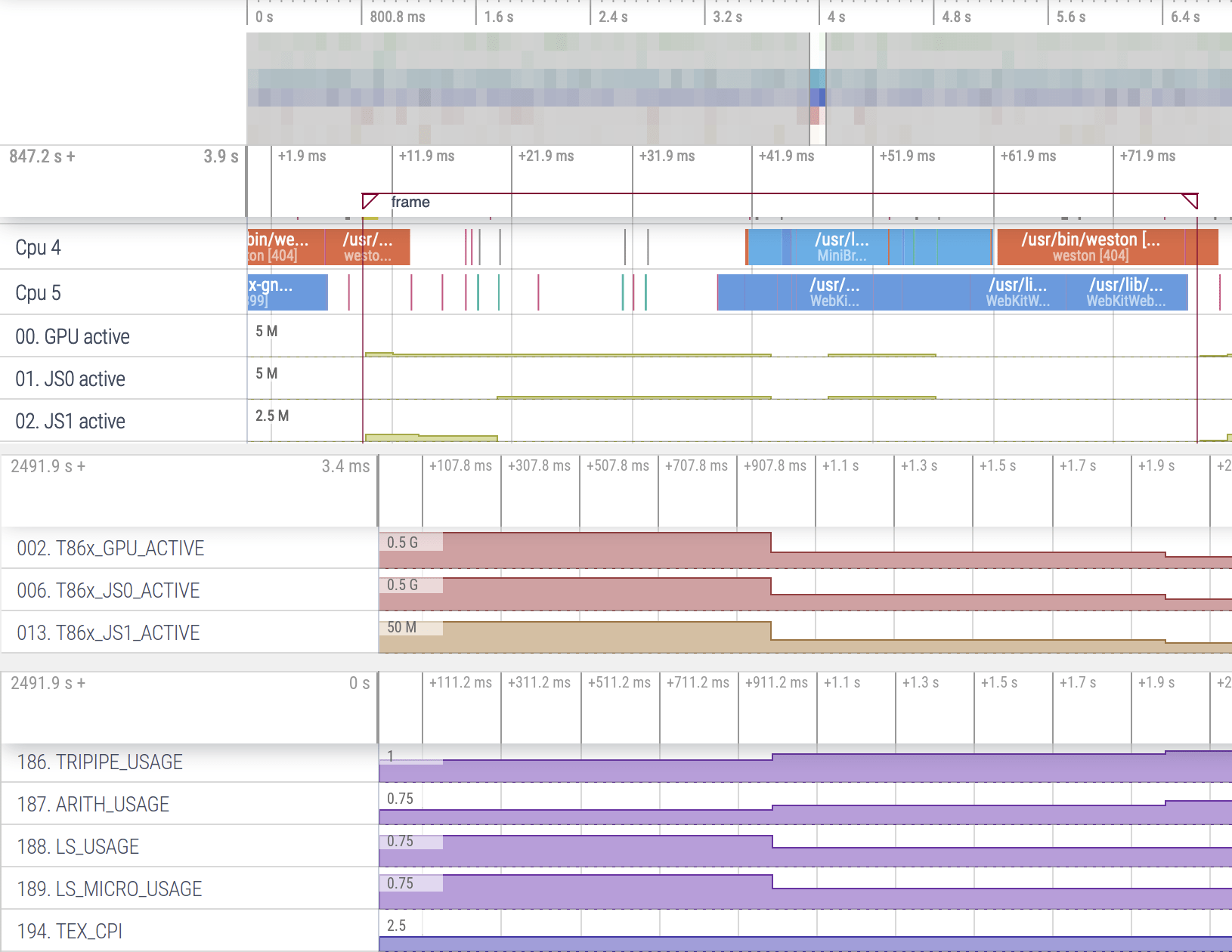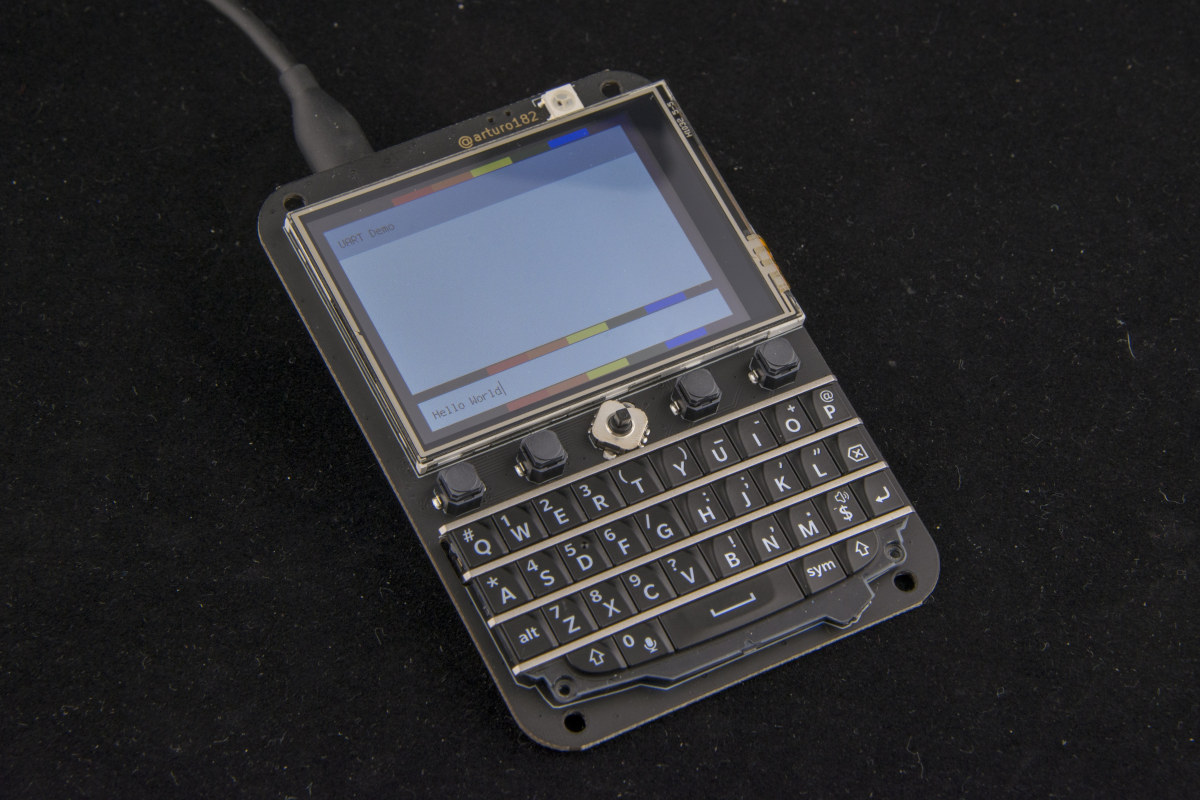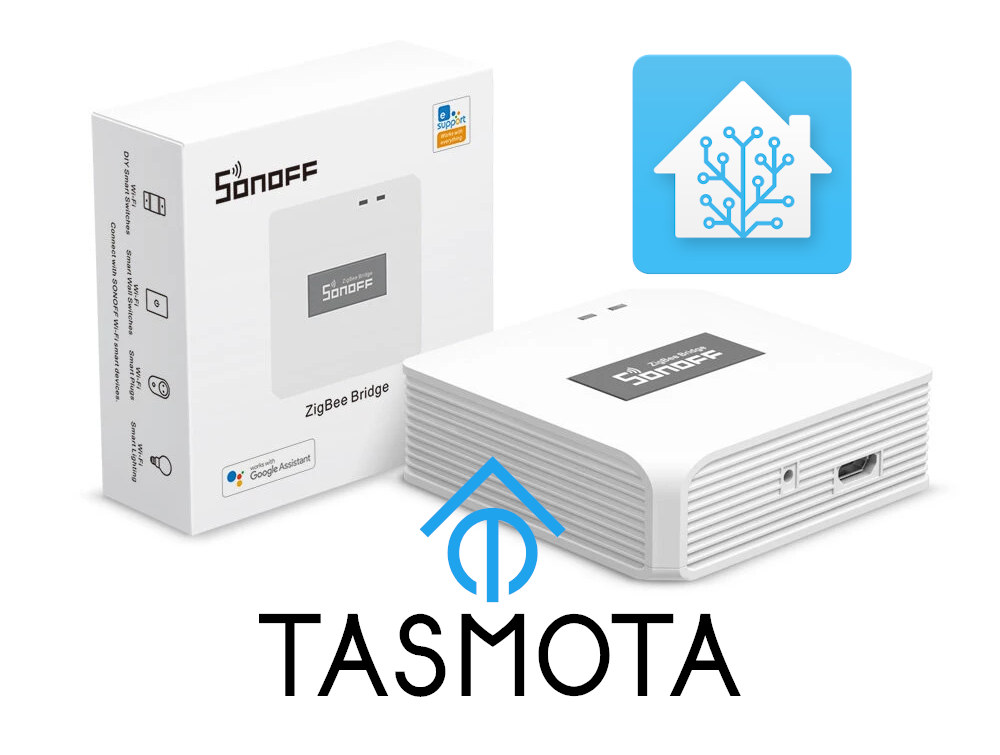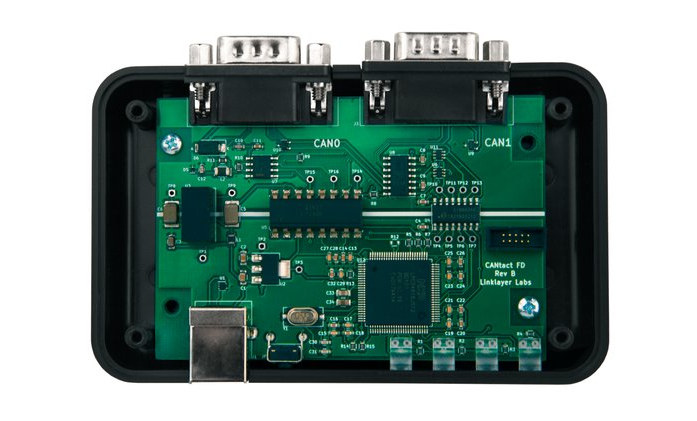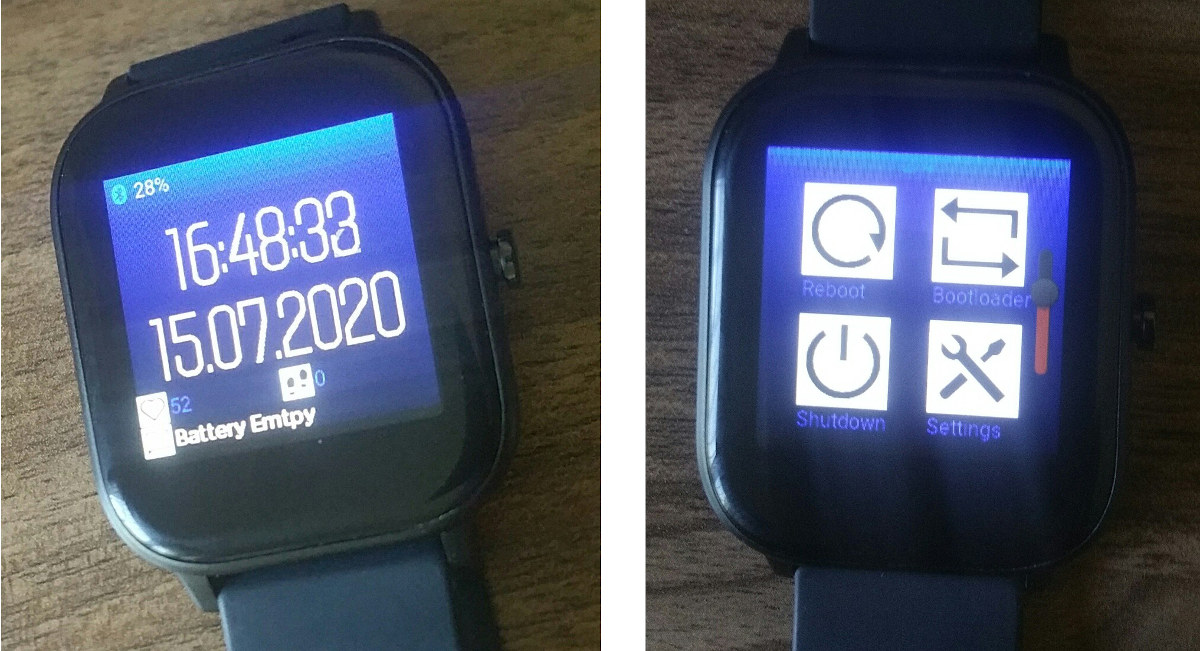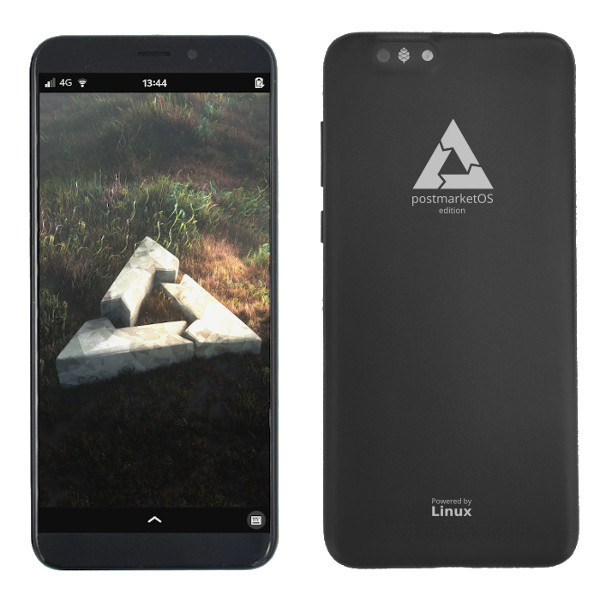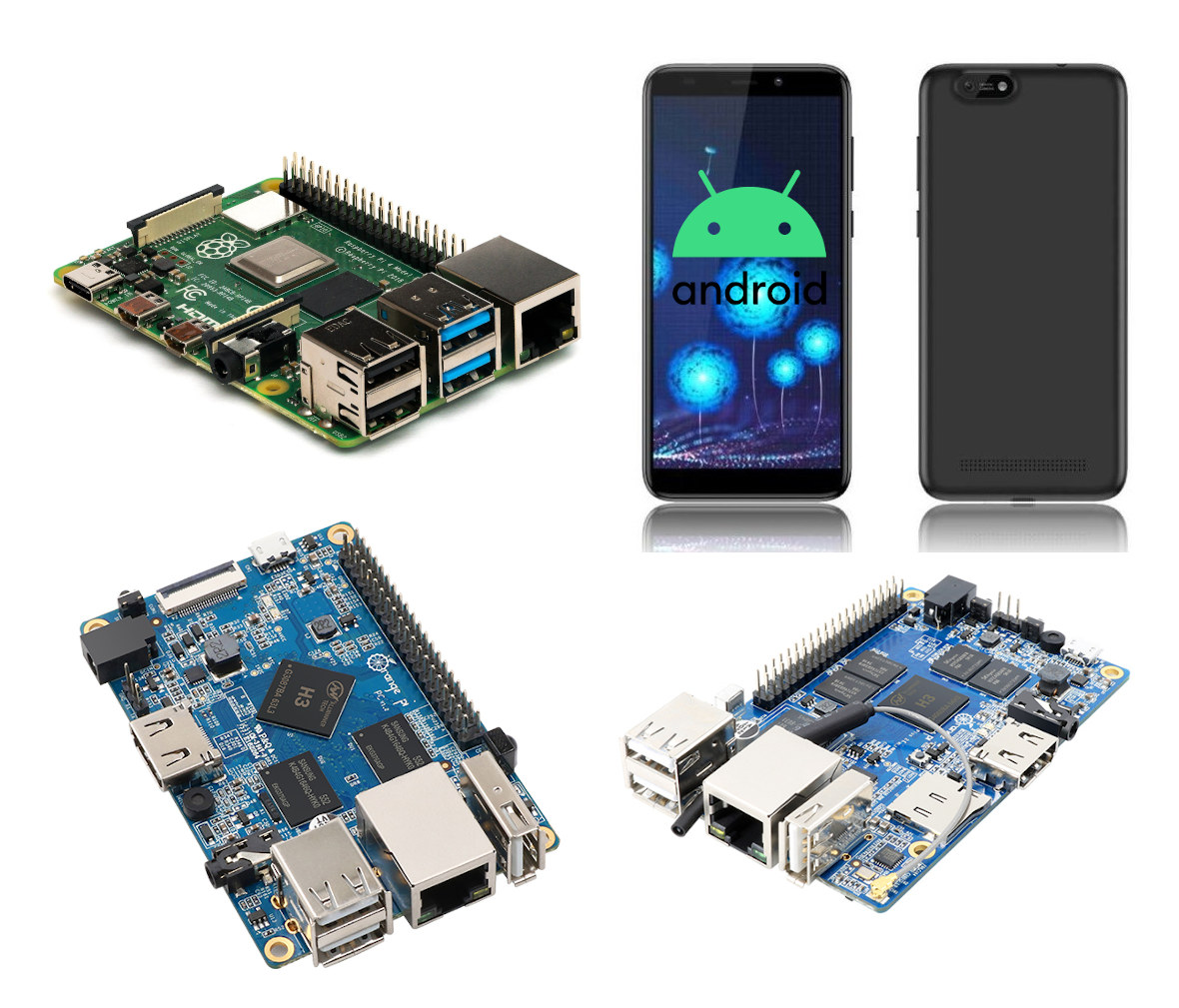When we covered Alibaba XT910 RISC-V processor earlier this week, the company confirmed working with open-source companies to make the source code is available for the chip, but that there were legal challenges to do so for a high-performance core. The company did not expand on what legal challenges there were, but I’m pretty sure it’s about patents and potential lawsuits. But there may be a solution, or at least a way for companies to protect themselves to some degree against patent trolls, thanks to the Open Invention Network (OIN) which I discovered in a press release about UNISOC recently joined the organization. So what does the Open Invention Network does exactly? We enable freedom of action for Open Invention Network community members and users of Linux/OSS-based technology through our patent non-aggression cross-license in the “Linux System,” which defines the commitment. We will continue to grow our community and the […]
Perfetto Profiler Now Supports Mali GPU Hardware Counters via Panfrost
Perfetto is an open-source system profiler, app tracer, and trace analyzer for Linux, Android & Chrome platforms, and user-space apps. The program can already visualize CPU and memory usage, as well as power consumption. GPU support is more limited with the program only capable of sampling the GPU frequency when the driver outputs that information via ftrace. When Perfetto is also extendable thanks to a Tracing C++ SDK that “allows userspace applications to emit trace events and add more app-specific context to a Perfetto trace”. Collabora made use of the tracing SDK to add support for Mali Midgard GPU performance profiling in gfx-pps project using the Mali GPU hardware counters exposed via Panfrost open-source Mali GPU driver. After following the installation instructions, you’ll be able to run the following executables for tracing and profiling: tracedtracing service. traced_probes OS probes service. perfetto command-line tool for recording traces. producer-gpuproviding the Panfrost data […]
Keyboard FeatherWing Brings Keyboard & Display to Adafruit Feather Boards
Solder Party is a brand new Swedish startup founded by Arturo182 who previously designed several maker boards including the tiny Serpente R2 CircuitPython prototyping board, and its first product, named Keyboard FeatherWing, brings a QWERTY keyboard and 2.6” color LCD with resistive touch screen to any boards compatible with Adafruit Feather for factor. That means you can build a portable device that runs Linux via the Giant Board, features an FPGA (Orange Crab), or a wide range of connectivity options including WiFi, Bluetooth LE, LoRa, etc… depending on your chosen board. The solution actually brings a bit more than just a keyboard and color, as shown by the list of Keyboard FeatherWing key features: Display – 2.6” 320×240 16-bit color LCD with resistive touch screen (SPI) Storage – MicroSD card slot (SPI) User Inputs controlled by a Microchip SAMD20 MCU QWERTY keyboard (I2C) 5-way button 4 soft tactile buttons Expansion […]
Sonoff Zigbee Bridge Now Supports Tasmota Firmware, Home Assistant, Zigbee2Tasmota
Sonoff ZBBridge (aka Sonoff Zigbee Bridge) WiFi to Zigbee gateway was launched a few months ago for $16.90 plus shipping, and it’s now also listed on Banggood for $17.99 shipped. It allows users to control Zigbee devices connected to the gateway using the eWelink mobile app used with other Sonoff devices. But many people like to run Tasmota firmware on their Sonoff devices since it’s open-source and provided more flexibility such as integration with Home Assitant or Domoticz. There was already support for Zigbee in Tasmota at the time but only for Texas Instruments SimpleLink CC253x Zigbee MCU’s, and Sonoff ZBBridge is made of an ESP8266 WiSoC and a Silicon Labs EFR32MG21 Gecko Series 2 Cortex-M33 Zigbee microcontroller. So I just suspected that eventually, Sonoff Zigbee Bridge could support Tasmota open-source firmware but that would take some time… It took about four months. Not too bad. It started in the […]
CANTact Pro Open-source USB to CAN Device Enables Car Hacking (Crowdfunding)
The Controller Area Network (CAN) serial communication bus allows microcontrollers and devices to communicate with each other without a host computer. It’s especially used in automotive applications where various components (dashboard, ABS, air conditioner, and other sensors) may need to communicate with each other, but it has also found its way into robots, industrial control systems, and avionics. CANTact Pro is an open-source USB to CAN device that can help you debugging or hack components inside a car or other vehicle. The tool features two CAN Interfaces and can be controlled from Windows, Linux, or Mac OS computers. CANTact Pro key features and specifications: CAN Interfaces – 1x CAN/CAN-FD/SWCAN (Single Wire CAN), 1x CAN/CAN-FD; Both via DB9 connectors Host Interface – USB 2.0 device port Misc – 4x LEDs Safety – Isolation between CAN and USB Power Supply – 5V via USB port CANTact Pro works with Windows, macOS, and […]
ATCwatch Arduino Firmware Works with PineTime, COLMI P8, “Da Fit” Smartwatches
Earlier this week, we wrote about fake heart rate sensors found in ultra-low-cost fitness trackers as reported by Aaron Christophel. It turns out he also maintains an open-source project specific to P8 watch, PineTime, and other smartwatches compatible with Da Fit Android app: ATCwatch Arduino firmware. The firmware provides a basic menu system, notifications, and the latest implementation enables direct HTTP or HTTPS GET requests to control IoT devices and get info from the Internet. The current firmware consumes about 150-200uA standby current, and last roughly 92 hours on a charge with heavy notification and usage. While it’s possible to connect an SWD St-Link V2 to flash the bootloader and firmware, it’s not necessary, as it’s possible to flash ATCwatch Arduino firmware without having to open the watch by using over-the-air update function with DaFlasherFiles for PineTime or P8 watch together with DaFlasher Android app. Once the update is done, […]
Pinephone “Community Edition: PostmarketOS” Launched with 3GB RAM, 32GB Flash, USB-C Hub
After PinePhone “BraveHeart Edition” with any OS pre-installed introduced at the end of last year, Pine64 launched PinePhone “Community Edition: UBports” with Ubuntu Touch last April, and now the company is taking pre-orders for Pinephone “Community Edition: PostmarketOS with Convergence Package”. Besides using a different operating system, the new PinePhone also got a hardware upgrade with 3GB RAM and 32GB flash instead of the 2GB/16GB configuration from earlier models. Due to the changes and the addition of a USB-C dock for convergence, the price has also gone up from $149.99 to $199.99 with shipping scheduled to start at the end of August. If you don’t need the extra memory, storage, and convergence package, you can still pre-order PinePhone with postmarketOS for $149.99. PinePhone “Community Edition: PostmarketOS with Convergence Package” specifications: SoC – Allwinner A64 quad-core Cortex-A53 processor @ up to 1.2 GHz with Arm Mali-400MP2 GPU System Memory – 3GB […]
GloDroid Brings Android 10 OS to Raspberry Pi 4, Orange Pi SBC’s, PinePhone, and PineTab
The community of developers working on software for single board computers often prefer to focus on Linux support, as companies will often provide Android firmware images. But those Android OS images are often not maintained at all, so we’ve seen some projects like the past such as H3droid bringing a better Android OS to Allwinner H3 and H2+ boards and devices. The project is still using Android 4.4 KitKat and that’s getting old with some apps like the latest version of Kodi not working anymore. But a new project has just been brought to my attention with GloDroid leveraging AOSP to bring Android 10 to various Allwinner based boards and platforms, as well as Raspberry Pi 4B. List of supported Allwinner hardware: Allwinner H3 (32-bit) based – Orange Pi Plus 2 SBC, Orange Pi Plus 2E board, Orange Pi PC Allwinner H5 (64-bit) based – Orange Pi Prime, Orange Pi […]



